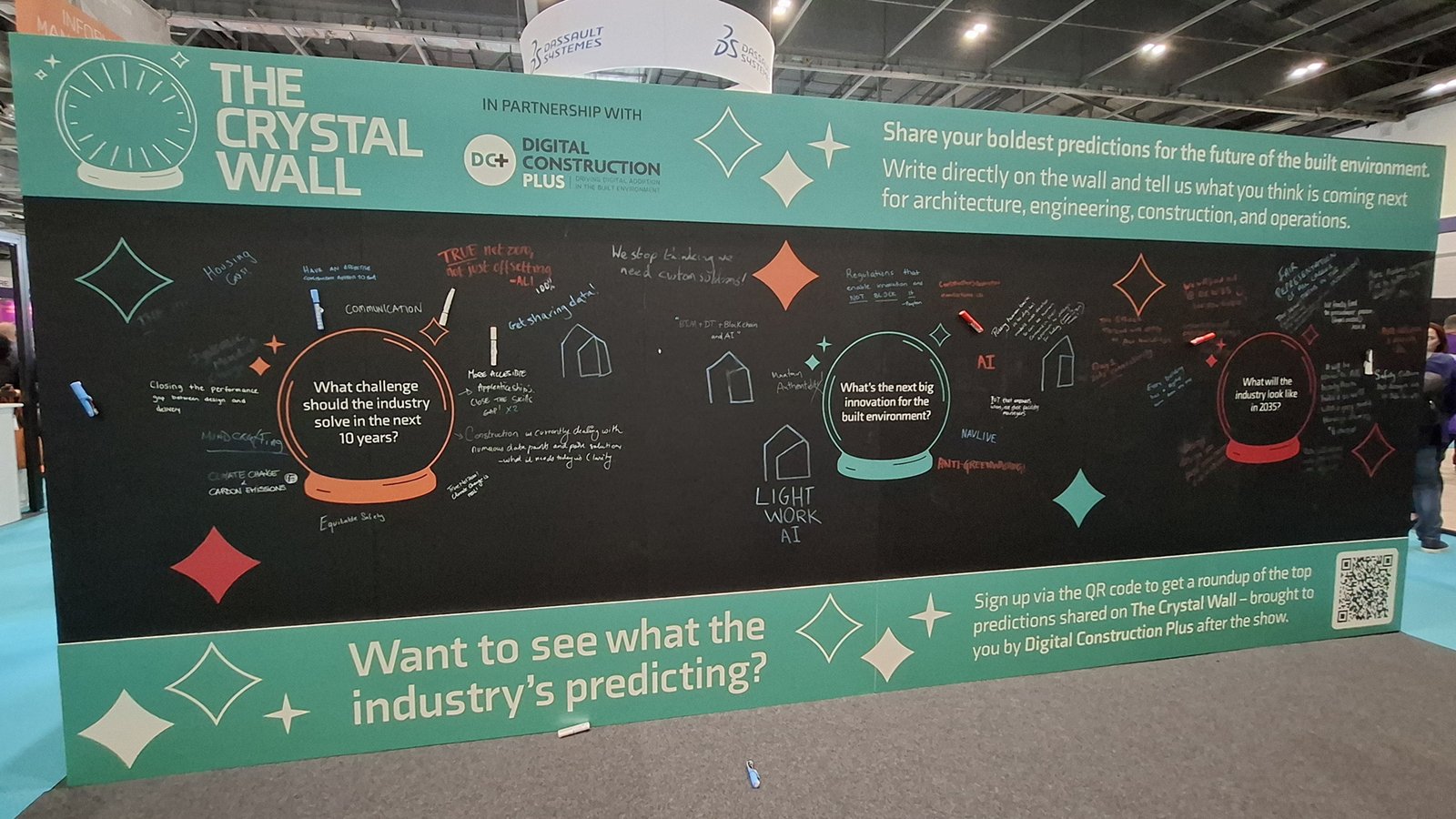Digital Construction 2025
Exploring Innovation in the Built Environment
Yesterday at Digital Construction Week & Geo Business, I explored how geospatial intelligence, AI, and digital twin technology are driving transformation across industries. The depth and relevance of the discussions, product showcases, and emerging trends reinforced how automation, immersive spatial workflows, and real-time data integration are reshaping construction, surveying, and asset management.
Digital Construction Week highlighted how reality capture, AI-powered defect detection, and digital twin applications are making project workflows more dynamic. Walking through the exhibition, it was clear that mobile data collection and geospatial intelligence were also central themes, underpinning many innovations designed to improve site management, accuracy, and decision-making.
The first talk I attended, “Insights at Speed: Turbocharging Decision-Making in AEC with Cesium and Unreal,” explored the convergence of real-time navigation and digital real estate workflows. The session highlighted how integrating Cesium’s geospatial visualisation with Unreal Engine’s immersive navigation enables architects and urban planners to gain a sense of place earlier in development. This approach enhances spatial awareness, streamlining decision-making for large-scale projects. Seeing how city-scale models can be explored interactively underscored the power of this workflow in refining urban planning and construction strategies.
Geo Business expanded on spatial intelligence and data-driven site monitoring, showcasing the increasing role of AI, photogrammetry, and reality capture. At the Surveying & Mapping Stage, “The Mobile Revolution for Onsite Data Collection” tackled industry challenges head-on. One of the most compelling points made was the growing shortage of qualified surveyors, raising questions about whether this challenge could also be an opportunity for advancing automated tools. The session covered common data collection mistakes such as human error, overlooking key dataset points, and inaccuracies, alongside new workflows improving onsite efficiency. The discussion showcased how Pix4D Catcher integrates smartphone-based LiDAR with cloud processing, enabling surveyors to generate point clouds, produce datasets in open formats, and capture spatial data with increased ease. The ability to use an iPhone to collect and integrate complex 3D datasets marked a shift toward removing unnecessary complexity while expanding capabilities.
Later, “Reality Capture: The Good, the Bad, and the Snake Oil” dissected the nuances of data accuracy and verification in digital modelling. The conversation emphasised the critical need to employ a qualified surveyor, recognising how expertise is fundamental to capturing and interpreting site data correctly. Key takeaways included the importance of understanding accuracy and precision, considering who is taking images, and ensuring correct lighting conditions when performing scan-to-model workflows, concluding that good reality capture isn’t just about tools - it’s about methodology, experience, and interpretation.
My final talk of the day, “The Digital Twin Revolution: Transforming Asset Management with Immersive Visualisation,” presented compelling insights into how AI-powered digital twins are reshaping asset management. The panel explored sensor-driven twins, static reality twins, and intelligent digital models, reinforcing how automation is advancing building lifecycle management, operational resilience, and predictive analytics. The discussion highlighted how connected digital twins integrate with Asset Information Models (AIM) and Project Information Models (PIM), improving maintenance tracking, performance insights, and long-term optimisation of physical assets.
Beyond the talks, networking provided a valuable window into the construction tech landscape. Connecting with innovators, startups, and thought leaders brought fresh perspectives on the trials and opportunities of building companies in this sector. Joining the C-Tech Founders club and participating in the DCW lounge networking event offered real-world insights into how emerging technologies are being positioned within the industry.
From geospatial applications to AI-powered digital twins, these events reinforced a future where data-driven strategies, immersive spatial intelligence, and predictive analytics are shaping smarter, more adaptable built environments. With Surveyr’s focus on AI-driven building inspection, these conversations align closely with the continued evolution of automated defect detection and digital workflows.






